Georgia quilt in a Tennessee museum
A little bluer photo
McMinn County Living Heritage Museum
Attributed to Charlotte LaFayette LeSueur Gaulden (1825-1889)
Brooks County, Georgia by the family member who donated the quilt.
Charles Screven Gaulden (1812-1884)
A biography tells us Charles "amassed a fortune of about $200,000 in about 15 years" in Lumpkin. We also read that he was a Whig.
Memoirs of Georgia, 1895
Charles renounced politics? His wife's quilt pattern, though, seems to reflect Democrat party politics.
Having made a fortune he bought a plantation known as Okapilko. Their last child Samuel was born there in 1859 after Charles had a religious revelation and decided to become a Missionary Baptist minister, preaching at churches in the Quitman area.
She certainly had household help with the children and the farm and perhaps assistance with the quilting from the many enslaved women at Okapilco.
See posts about the pattern here:
https://barbarabrackman.blogspot.com/2018/10/political-quilts-4-democratic-victory.html
https://barbarabrackman.blogspot.com/2018/10/political-quilts-5-quilt-pro-or-anti.html
http://encyclopediaquiltpatterns.blogspot.com/2019/11/whigs-defeat-in-block.html
http://barbarabrackman.blogspot.com/2019/09/whigs-defeat-indiana-rose.html
The pattern dates to the 1840s and has many names in the commercial
pattern literature and the vernacular, among them Whig's Defeat,
which would have been a Democratic victory when Whigs and
Democrats were the major parties in the 1840 and '50s.
Charles Gaulden ran again for the Georgia Legislature in 1857
Atlanta Constitution, 1857.
He was a Democrat in this election.
They moved to Brooks County in 1859.
He apparently founded the Okapilco Missionary Baptist Church.
"Brother Gaulden was for several years the only preacher, and the missionary spirit that gave life and energy to Baptist principles is chiefly due to his instruction and influence."
The 1860 census found them in Brook County where Charles
was listed as a Minister Farmer
"Politics did not suit his taste"? Yet he was an impassioned advocate of the slavery system and voted for secession before the Civil War.
Atlanta Constitution, June 1859
In 1859 he gave a 90-minute speech advocating the repeal of federal law prohibiting importation of enslaved Africans. The Act Prohibiting the Importation of Slaves had been in effect since 1808.
The Gauldens kept many slaves according to the 1860 census, which counted 32.
Charles represented Brooks County at the 1861 Georgia Secession Convention
voting to leave the Union.
When the war began Charlotte was raising four children on the farm. Her brother Thomas LeSueur in his early 20s had enlisted in a Georgia volunteer regiment.
His cemetery marker in the Gaulden family cemetery tells us
he was fatally wounded at the Second Battle of Manassas in August, 1862.
The 1870 census does not tell us much about how the Gauldens fared in the war.
They continued employing former slaves according to Freedman's
Bureau records. Charles seems to have held on to several plantations.
In their last years they moved to Madison Street in Thomasville.
1880 Census, Thomasville, Georgia
Charles is listed as a Clergyman; the children are on their own and they
have three live-in-servants: Ida and Flora, Black women seem to have no last names.
Atlanta Constitution
Charles died in October, 1884
Charlotte died 5 years later. Many family members are recalled by monuments
in the Gaulden Cemetery at Okapilco.
We return to Charlotte's quilt.
The seam lines in the block emphasized here. The design
is often fitted into a curved shape and then a square block.
Texas quilt in a similar pattern
Did Charlotte make it in 1860 soon after the birth of her last child?
The three plain color cottons are no help in dating beyond the broad
range of 1840-1920 when Turkey red and Prussian blue on a white background
were common in patchwork. The pattern dates to the mid 1840s when
Democrats dreamed of defeating Henry Clay, the great unsuccessful Whig candidate
who ran for President several times.
Less of a mystery is how the quilt got to Tennessee.
The maker's daughter Charley Mary Gaulden Tillman (1847-1925) had a daughter Ela Tillman Key (1874-1929), wife of Atlanta's mayor in the 1920s. They had a daughter Ruth Key Butler (?) McDonald (1912-1994) who had a daughter Marie Butler Neel (1937-1910)---all of these women lived in Georgia. Marie had a granddaughter Gay who lived in Tennessee and when Gay inherited the quilt she donated it to the McMinn County Living Heritage Museum.An impressive list of women descended from Charlotte LeSueur Gaulden.
The Museum makes the most of their quilt collection.
See posts about the pattern here:
https://barbarabrackman.blogspot.com/2018/10/political-quilts-4-democratic-victory.html
https://barbarabrackman.blogspot.com/2018/10/political-quilts-5-quilt-pro-or-anti.html
http://encyclopediaquiltpatterns.blogspot.com/2019/11/whigs-defeat-in-block.html
http://barbarabrackman.blogspot.com/2019/09/whigs-defeat-indiana-rose.html






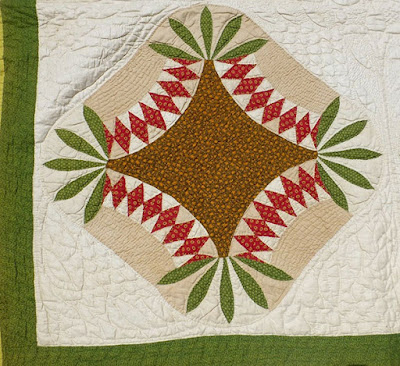






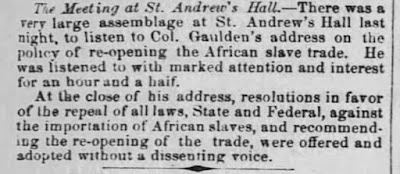




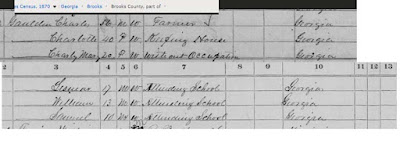



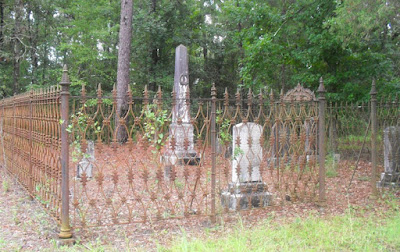


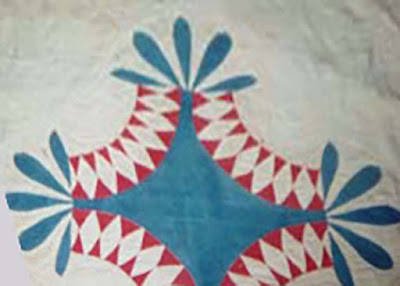


No comments:
Post a Comment